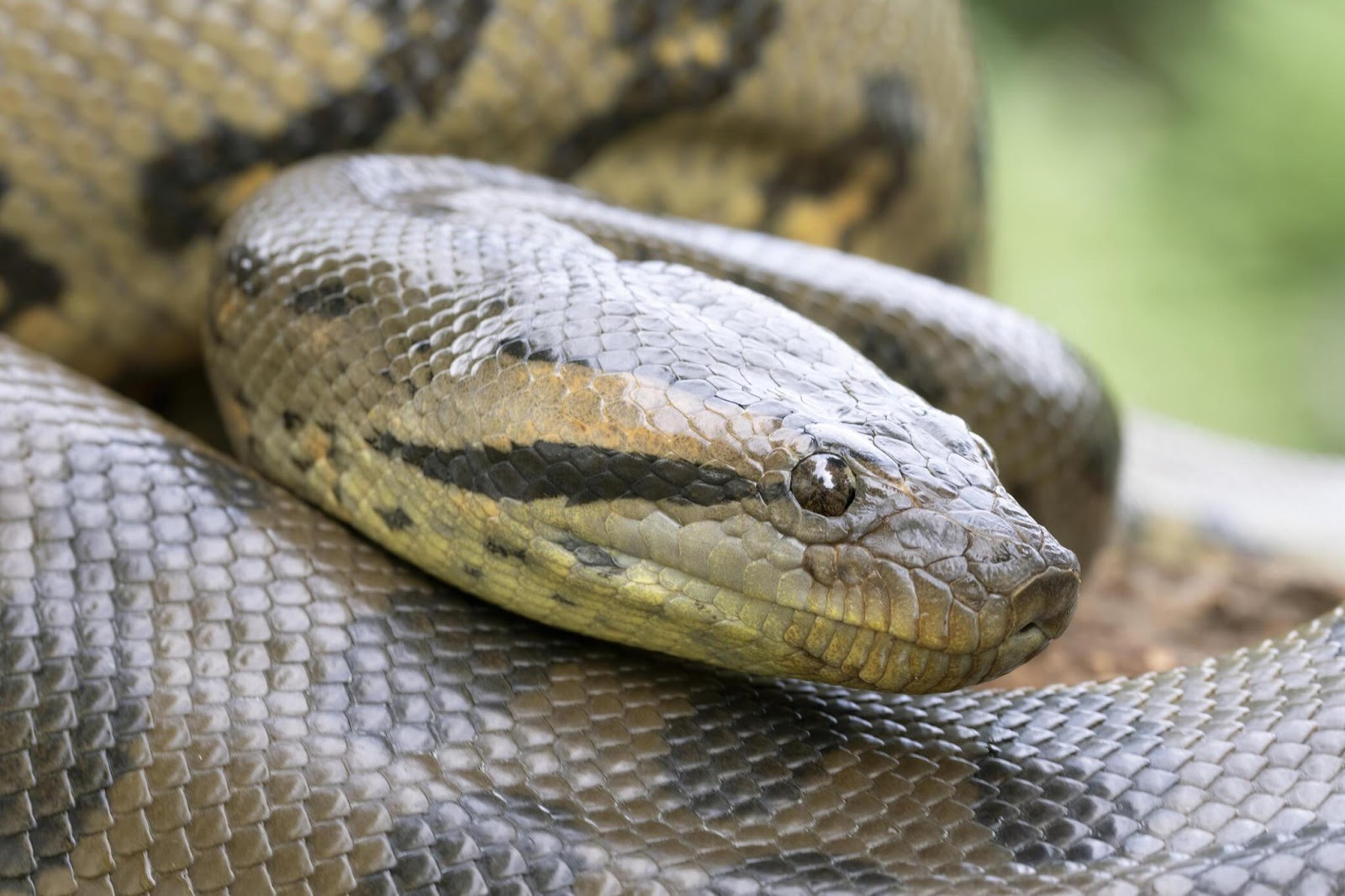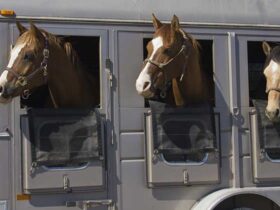Anaconda is seen as monstrous creatures in movies and cartoons, devouring hapless explorers and other animals.
Their size and reputation as powerful constrictors have captured the human imagination for hundreds of years. The reality about these hissing giants of South American forest is extremely fascinating.
Species
Anaconda belongs to the boa family, which means they are not evil like vipers and cobras but constrictors. There are four recognized species of these giant constrictors, but the green anaconda is supreme.
- It tips the weighing scales at 330 pounds on average.
- They are not the longest, but their sheer mass is sufficient to send a shiver down your spine.
- Its stocky build and immense muscle mass are designed for a predatory lifestyle.
- Its body has a green-olive hue adorned with black markings, providing a remarkable camouflage against the greenery around its aquatic habitat.
- The eyes and nostrils are positioned high on their heads. This allows the semi-aquatic predator to seamlessly blend in the water, keeping snouts exposed as they wait for unsuspecting prey.
- They can even hold their breath for 10 minutes under water, allowing ambushing unsuspecting animals that come to drink.
Marvellous hunting tactics
Besides their impressive size, the hunting tactics of these monstrous creatures are marvels of power and strength.
- They are surprisingly fast swimmers, propelling themselves with the powerful ripple of their muscles.
- Their constricting strength helps them to overpower their prey.
- When a capybara, tapir or caiman wanders very close, the giant snake strikes with lightning speed, wrapping its muscular coils around the unfortunate prey.
- With every exhale of the struggling prey, the grip tightens more and more, eventually squeezing their lungs and stopping the heart.
- It has a flexible jaw and highly expandable body, which allows swallowing the entire prey.
Diet
Anacondas are not picky eaters. They consume –
- Rodent
- Fish
- Turtles
- Deer
- Wild pigs
Their diet reflects the diverse aquatic and terrestrial fauna of their South American habitat. Their constriction power allows them to overpower creatures many times their size.
Breeding behaviour
They are solitary creatures, coming together only to mate.
- The breeding season is complicated, with females releasing pheromones to attract a harem of males.
- Males compete for the right to mate with elaborate wrestling matches determining the victor.
- Unlike snakes that lay eggs, anacondas are ovoviviparous. It means they give birth to live young, but the eggs develop and hatch inside the mother’s body.
- A single female can produce around 20 to 100 live young at a time. This high productive rate ensures the continuation of their lineage despite the dangers they encounter.
Myths
Anacondas are attracted to humans is a myth. Attacks on humans are extremely rare. It is their solitary nature and immense size that has driven myths and legends of monstrous creatures preying on humans in the Amazon forest.
They are apex predators that help to control the population of large reptiles and mammals in the Amazon. Their presence ensures a healthy balance within the food chain.
Unfortunately, these giants are experiencing threats like habitat loss, illegal pet trade, and human conflict. There is a need for committed conservation efforts to ensure their survival.










